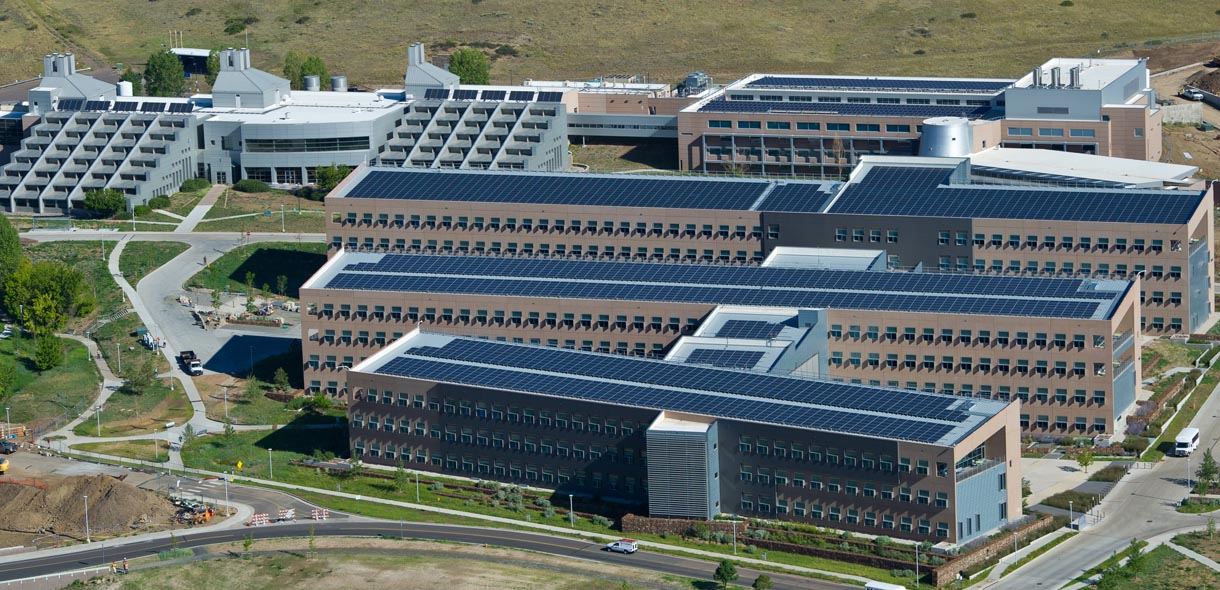
 National Renewable Energy Laboratiory, Golden, Colorado
National Renewable Energy Laboratiory, Golden, Colorado
Solar's Shining Progress
Interview with National Renewable Energy Laboratory senior scientist Garvin Heath
Back some thirty years ago now, I visited the federal governent's National Renewable Energy Laboratory in Golden, Colorado to research an article that would eventually appear in Popular Science magazine. Back then, solar was expensive. You only used it on costly orbiting communication, weather, and spy satellites, as well as for remote applications where connecting to the local power grid was just too cost prohibitive. The idea of covering not just a few square feet of residential roofs, but hundreds of hectares and acres of ground with photovoltaic panels seemed financially out-of-the-question. How things have changed, especially in the last decade. Now, between wind turbines and photovoltaic solar arrays, fossil fuel generation, coal in particular, is no longer competitive. Most of the new electricity generation added globally in 2019 was renewable. When power purchase agreements are now put out for bid, depending on the location, it is usually wind or solar that wins because coal, nuclear, and even natural gas can't compete. Besides tracking developments in the EV World © though the @EVisioneer2020 Twitter feed, I also keep a finger on the pulse of developments in renewable energy, which I post to my @Papio_Creek account. So, when "fossil fools" try to argue that renewables aren't economical or practical, I have reason to question, if not their sanity, their integrity. That's why I decided to reach out to the folks at NREL to talk about the state of solar energy, principally photovoltaics, in 2020. Back on May 8th, I talked via telephone for nearly an hour with Garvin Heath, one of the lab's senior research scientists about the state-of-the-art, about how we went from too-costly-to-meter to too-cheap-to-ignore. In particular, I wanted to know about one of the central premises of most critic's opposition to solar: the pay-back period and the energy-irvested-to-energy-returned ratio. Do solar panels ever actually pay for themselves? And what about their toxic waste? What happens to the panels at the end of their 20-25 year warranty? Can they find a "second life" like EV batteries or do they end up in landfill leaching toxic chemicals into precious groundwater? You can listen to the first six minutes of our discussion using the MP3 player to the right. The full 52-minute conversation will be available to Patron Supporters. In the opening of our call, I mention the solar array near my birthplace, a village in central Germany that dates back to the middle ages. Here is a Google satellite image of that installation a mere 335 meters from house in which I was born at Sandstrasse 16.Byline: Bill Moore

First Published: 2020-05-08
Pages Viewed: 25159

EV WORLD.COM
Future In Motion™ Podcast
Garvin Heath
The Complete MP3 File Is Available to Patron Supporters